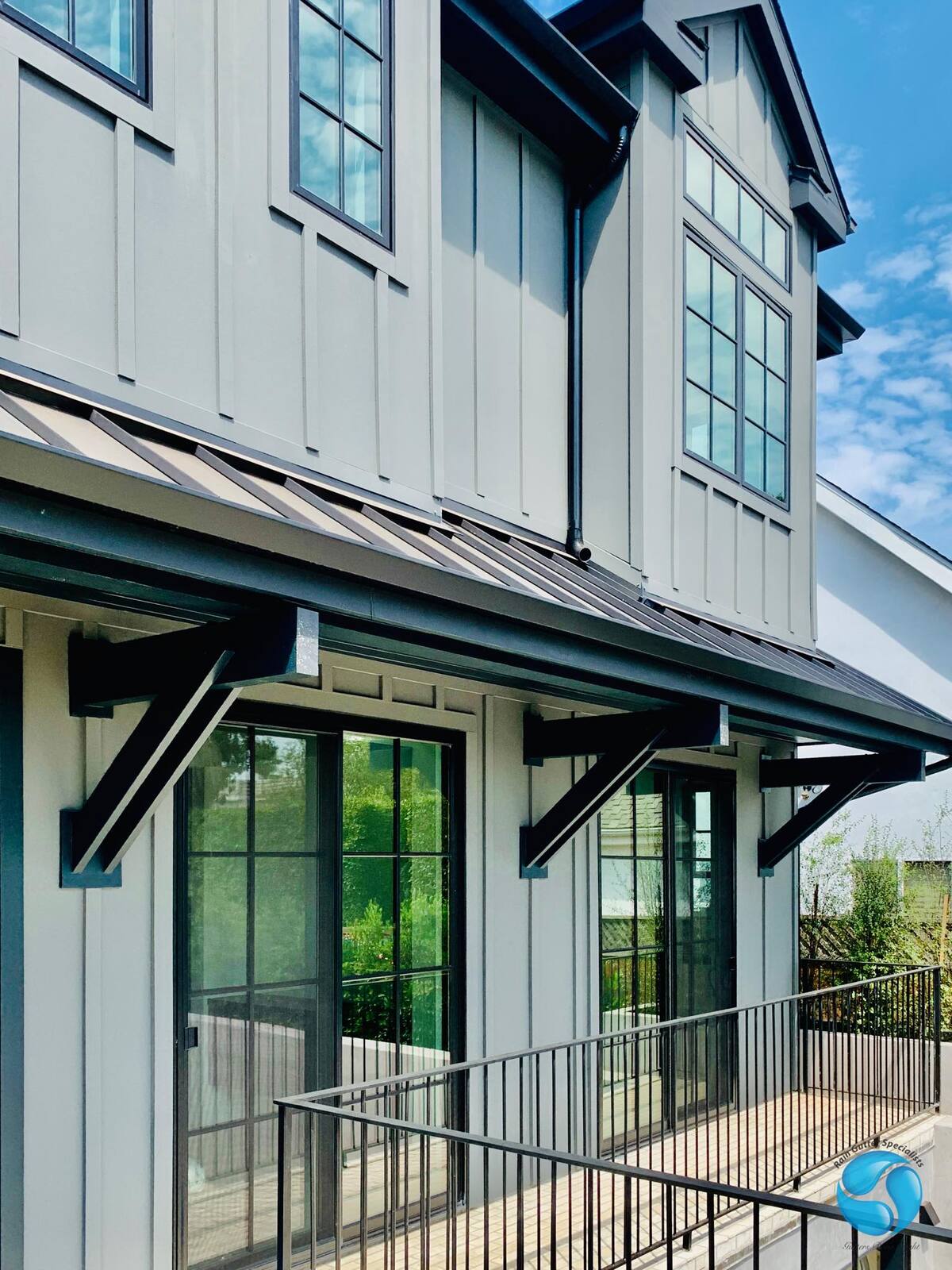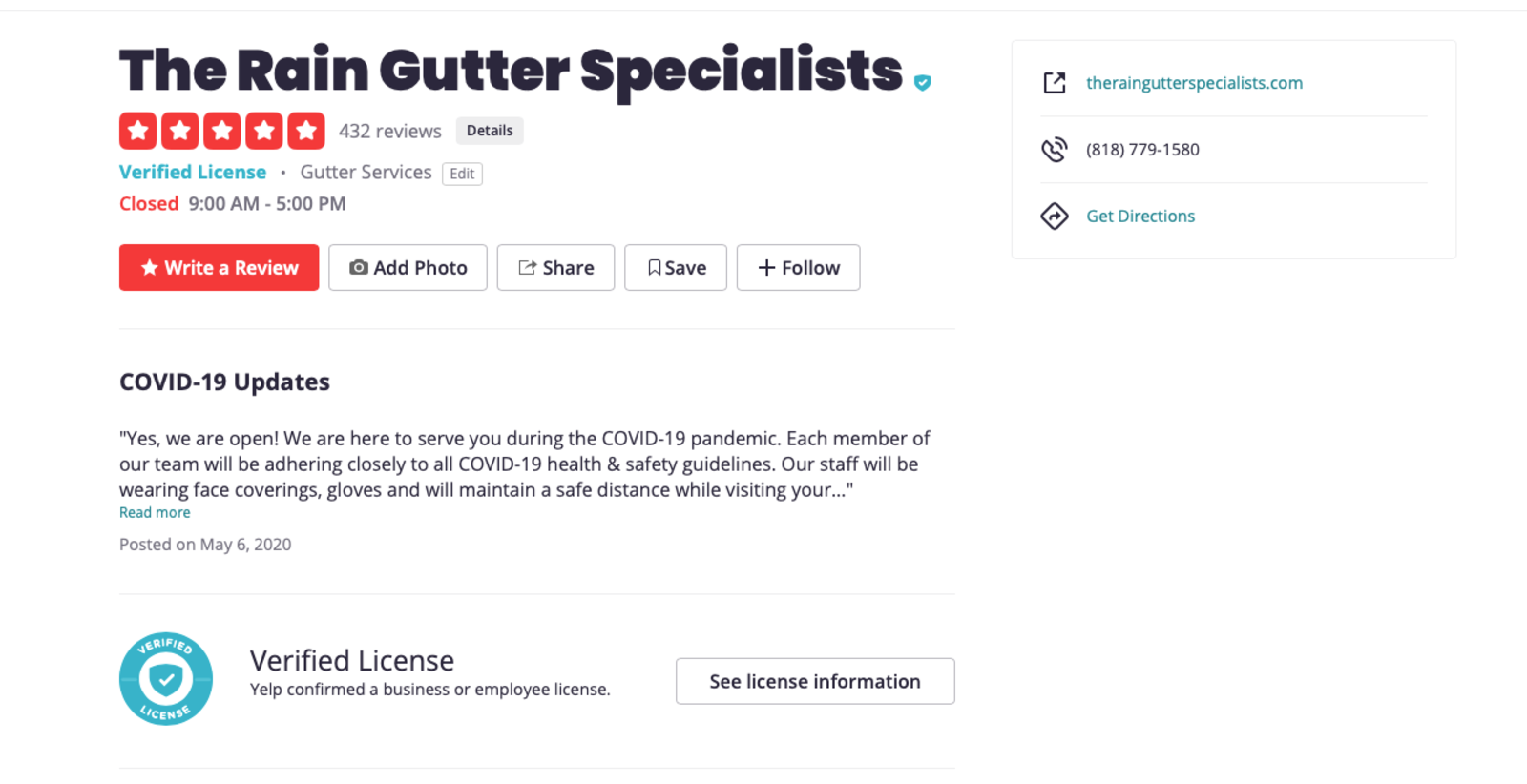
Rain Gutters Specialists Near San Fernando Valley - 8 Signs You Need New Rain Gutters
Consult a reputable Los Angeles residential rain gutter professional to help you choose the right kind of rain gutter for your home.
Rain gutters are an essential part of maintaining the curb appeal and structural soundness of your house. Whether you’ve recently purchased a new property, or have been living in the same house for years, replacing your rain gutters may be necessary. Learn 8 important signs that it’s time to replace your rain gutters in your Southern California Home.
Why Does My Southern California House Need Rain Gutters?
Even in the drier climate conditions of Los Angeles, Ventura, and the San Fernando Valley, rain gutters protect the structural integrity of your home. Some houses are built without gutters, or only have partial gutters, because California building codes do not always require rain gutters for certain kinds of roofs.
Gutters guide the flow of rainwater off the roof so that it doesn’t damage the structural integrity of the building. Over the years, even small amounts of rainfall can cause devastating water damage without properly installed guttering, including:
- A stained exterior. This includes water marks and streaks from dirt and particulate matter carried by rain, causing a house to look unkempt, and drastically reducing the curb appeal of your home.
- Exterior damage. Water stains aren’t only an aesthetic problem. Persistent staining can cause the exterior siding of your house to rot, creating openings and holes for pests to come inside, among other serious issues.
- Cracked or settled foundation. When the soil around the perimeter of your house becomes heavy and saturated with water, it puts excessive pressure on the foundation. This can cause cracks that compromise the structural integrity of your house. When the foundation cracks or settles, it can lead to uneven floors and cracked walls on the inside of the house.
- Basement flooding. Water can seep in through cracks in the foundation and cause basement flooding. Although many homes in Southern California do not have basements, if yours does have a basement or partial basement, rain guttering is especially important.
- Mold growth. When excessive moisture finds its way indoors, mold growth can occur. This is a serious health hazard and is often difficult to get rid of.
In short, a high-quality rain gutter system is a defensive measure against costly damage in the future. Beyond their preventative value, rain gutters allow you to collect rainwater, which is environmentally friendly and best for watering plants and lawns during the dry season because it is free of chlorine and chemical additives.

How Long Are Rain Gutters Supposed to Last?
With high-quality materials, expert installation, the right kind of rain guttering for your house, and preventative repairs along the way, rain gutters should last you a long time. Different materials last different periods of time, but you should expect your rain gutters to last 20 years or longer. However, frequent storms, fallen trees, and other events causing physical damage may shorten their lifespan, so it’s best to regularly check for signs of damage and old age.
Because of how long they last, it is important to be sure that your gutters are the right fit for your property. With a variety of materials, including copper, aluminium, steel, and vinyl, and several different shapes and profiles, each ideal for a different type of roof, determining the kind of guttering you need can be tricky. Consult a reputable Los Angeles residential rain gutter professional to help you choose the right kind of rain gutter for your home.
8 Signs You Need New Rain Gutters
- Gaps or separations. Rain guttering functions as a continuous system, and must remain fastened together. Sections of your guttering may occasionally separate under harsh conditions, but if it becomes a persistent problem, it may be time for a gutter replacement. This is an especially common problem in the case of traditional sectional guttering, which needs seams approximately every 10 feet. To avoid excessive gaps and separations requiring frequent repairs, consider seamless guttering when you replace your gutters, which only need seams every 60 feet.
- Sagging gutters. Similarly, if your gutters are sagging, pulling away from the house, or don’t remain properly pitched, the effectiveness of the guttering system is compromised. While sagging gutters can be repaired, it’s often costly, and the problem itself may indicate that water isn’t draining properly, that the fascia boards are starting to rot, and that the system isn’t the right fit for your home.
- Screws or nails lying on the ground. Nails and screws that keep sections of your gutters attached to the fascia of your roof may come loose. The fascia is the board under the lower edge of your roof that supports the bottom row of roofing tiles. If your gutters can’t stay attached to your fascia, both may need to be replaced.
- Cracks and fractures. Occasional cracks and fractures can be patched up with sealant and flashing. However, if you find many visible cracks and fractures, or you find new ones on a frequent basis, this is a sign of the natural wear and tear that comes with time. Multiple cracks and fractures indicate that your rain gutters are old and in need of replacement.
- Standing or overflowing water. Standing or overflowing water may be due to a blockage at some point along the rain gutter. Locating and fixing a blockage does not require professional help. However, if your gutters are continually full of water, it may be an indication that the gutter system you have in place is not the correct fit for your building or your area’s rainfall patterns.
- Peeling paint and water marks. If there is paint peeling on the sides of your house, it may be an early sign of water damage. Additionally, if you can see water marks underneath your rain gutters on a sunny day during a dry season, this is a sign of water damage. If your rain guttering systems are working correctly, the side of the building should be protected from excessive moisture.
- Rust or other oxidation. Metal gutters may develop rust, or other oxidation, if they are old or are not the correct type of gutter for the amount of rainfall you’re getting. If your gutters are made of steel, look out for red rust. If oxidized, aluminum may develop brown or grey spots, while oxidized copper is green in color. It is best to replace rusted sections of your gutter before they crumble, but rust may be an indication that it’s time to replace the entire system.
- Water collecting around the foundation. Gutters are designed to keep water from pooling around the foundation of your house, so if you notice this occurring, something is amiss. It may be as simple as a clogged downspout, or indicate that your entire system needs to be replaced. It is important to watch out for water collecting around your foundations, because avoidable repairs to the foundation are time-consuming and costly. Keep an eye out for other signs of moisture near the foundation of the building, such as mildew.
Can I Replace My Own Rain Gutters?
While it is possible to do DIY gutter replacements and repairs, it’s always best to contact a Los Angeles rain gutter specialist with experience replacing and installing residential rain gutters. With proper installation, high-quality gutters can last you a lifetime.

For a free Southern California rain gutter consultation, contact us today.
LA County Rain Gutter Specialists
Contact for more information and become a happy customer.
https://www.theraingutterspecialists.com
Contact Sales
14815 1/2 Oxnard St.
Van Nuys, CA 91411.
Contact Number
Phone: 818.779.1580
